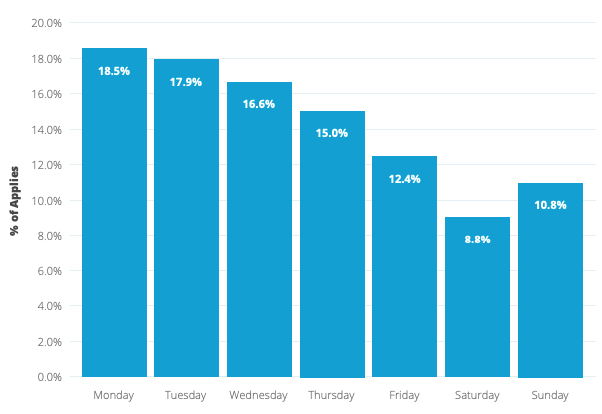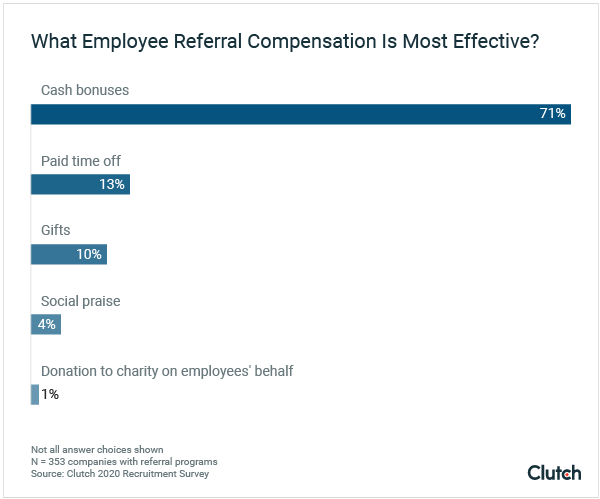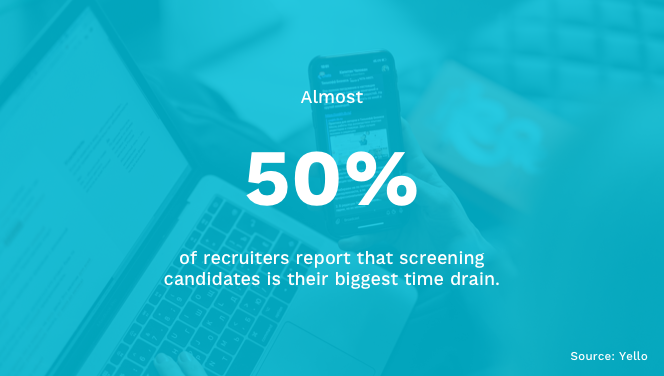As a result of the global COVID-19 pandemic, many organizations have had to make drastic changes to their business operations in 2020—and that includes cost-cutting measures in many departments, including talent acquisition. Some have slashed their recruiting budgets, while others have stopped their hiring efforts completely.
It is very probable that your recruitment budget has been hit too, and if that’s the case, you need to look for and adopt some cost-effective recruiting strategies to drive your future hiring efforts. The question is, how can you drive cost-effective recruiting? What are some of the key tips you can implement?
Read on to find out!
What’s in?
- Advertise where it’s worth it
- Focus on internal mobility to fill in skills gaps
- Encourage employee referrals
- Use recruiting automation
- Adopt remote interviewing
- Build a talent pool of qualified candidates
- Use recruitment analytics and track results
- Make use of social media and other digital channels
- Refine your candidate selection process
Like what you see?
Don’t miss out. Subscribe to our quarterly digest to get the latest TA and TM resources delivered right to your inbox.
Even if you recognize the benefits of cost-effective hiring, you might not know how to go about it to ensure success. Here are our favorite tips on how to make your recruiting more cost-effective:
1. Advertise where it’s worth it
One of the best ways to drive cost-effective hiring is to advertise in the right places. You can do so by using data to analyze which recruitment channels have been efficient for you and which help you attract the most qualified candidates.
That’s where you should invest your job advertising budget. To make the most of your advertising budget, consider programmatic job advertising, which can reduce your cost-per-applicant by more than 30%. Programmatic job advertising vendors provide different pricing models such as pay-per-click or per completed application, so you only pay for the results.
Also, the labor market is changing and unemployment has grown rapidly as a result of the COVID-19 crisis. That means you’ll probably receive more applications than you have in the past, meaning you likely won’t have to invest in advertising as heavily as before.

Job openings receive most applications on Mondays. When you use programmatic job advertising, consider lowering your budget for the days that are not that popular among job seekers.
2. Focus on internal mobility to fill in skills gaps
It is much easier and cheaper to hire internally—which is why having an internal mobility program is a great way to cut down on recruiting costs. Internal mobility, or the movement of your employees to new, internal opportunities in your organization, proves very beneficial in many ways—especially during times of economic uncertainty when your hiring needs are likely fluctuating.
To build out an awesome internal mobility program, you need to create a culture where moving from job to job in the same company is encouraged. First, perform an internal audit and map out your employees’ skills. This will help you pinpoint skills gaps that you can fill in with members of your own team. Plus, you’ll know which skills you’re truly lacking in-house, which will help determine which roles you truly need to hire for.
The founder of a social media agency explained this well: “The most important attributes for your first employees are that they are enthusiastic, eager to learn and capable of fulfilling a variety of roles within the company – that way their contribution to the business can evolve as the business itself evolves.”
Despite the benefits of internal talent mobility, most companies still aren’t getting it right. A Deloitte survey revealed that 49% of organizations feel they lack the internal processes to identify and move employees to new roles. To address this pain point, develop a structured internal recruitment process by encouraging career development and mentorships within your organization.
Not only will this help with internal mobility, but also with employee retention. According to a LinkedIn survey, 94% of employees stay with a company if they believe the organization is invested in their growth. You can also make it a point to hire top-performing interns for entry-level roles within your company.
3. Encourage employee referrals
One of the best, most effective methods of finding qualified candidates that are a great culture fit is employee referrals. 69% of employers say they have a formal employee referral program at their organization.
The benefits speak for themselves. By encouraging your employees to refer their peers for your openings, you can make top-quality hires at a lower cost. Referred hires usually finish training and reach peak productivity faster. Referrals are five times more likely to be hired, with one out of every five referrals getting a job offer. In addition, employee referrals are more likely to be a long-term fit because they’re vouched for by people who already know and like the company culture.
To work toward cost-effective hiring, build or improve on your employee referral scheme. You can do this by incentivizing employee referrals with things like retail gift cards, extra paid time off, or a cash bonus. You can also look at the organization’s own external network and identify colleagues that are a good fit.

If you can afford to award cash bonuses for successful referrals, they can be a very effective part of your employee referral program.
4. Use recruiting automation
Recruiting automation is a very effective way to reduce time to hire, streamline tasks, and work more efficiently to decrease expenses. Time is money, and speeding up the hiring process helps companies save on recruiting costs.
Lower time to hire directly correlates with a lower cost per hire. Companies with a time to hire of three weeks or more spend an average of $3,000-$4,000 per hire, while those with a time to hire under three weeks see a 50% reduction in costs.
By automating the manual, repetitive parts of the hiring process, you can cut down on labor hours, which will in turn save you money and improve your recruiting operations. There are multiple steps in your recruitment process you can use automation in to make your hiring efforts more cost-effective, including:
- Advertising open roles
- Tracking job applicants
- Recruiting on social media
- Pre-screening candidates
- Scheduling job interviews
- Nurturing job candidates
- Conducting background checks
- Rediscovering past candidates
5. Adopt remote interviewing
Remote interviewing continues to grow in popularity—especially amidst the COVID-19 pandemic, which has made face-to-face interviewing nearly impossible for most organizations. One survey revealed that 63% of companies have previously used video interviewing in their hiring process, and that momentum is now continuing with more and more companies adopting virtual interviewing to select their candidates.
The benefits of remote interviewing are clear. Conducting interviews remotely leads to shorter time to hire, reduces the risk of unconscious hiring biases, eases scheduling, and ultimately decreases hiring costs. Companies are 2.7 times more likely to improve their cost per hire by using virtual interviews than those who do not utilize them. Plus, best-in-class companies are 61% more likely to use video interviewing tools in comparison to other organizations.
You can implement one-way video interviews to screen your candidates instead of phone calls, streamlining your interviewing processes and reducing the number of labor hours associated with screening. In the later stages of the candidate journey, continue with live virtual interviews to meet the candidates. An interview scheduling tool will make the process even easier.
In the wake of COVID-19, many companies are also having and attending virtual job fairs to recruit new candidates. These are much less costly to organize or participate in than physical job fairs.
Stop guessing,
Start data-driven hiring.
Learn how you implement a modern candidate selection process, that is: streamlined, experience-driven and backed by data.

6. Build a talent pool of qualified candidates
Building a talent pool of qualified candidates who are interested in working for your organization will help you save on recruitment costs while also providing a safety net you can fall back on when you need to.
This way, you always have a bunch of pre-screened candidates to turn to when a hiring need arises at your company. For example, candidates who didn’t make the cut the first time or haven’t found their desired job but like you as a company may be a perfect fit for future roles you’re hiring for. Re-engaging candidates who were previously unsuccessful will help you decrease your overall cost per hire and ease your recruitment process.

Having a talent pool of pre-screened candidates helps you cut down the screening time and speed up your time to hire.
7. Use recruitment analytics and track results
Recruitment analytics can be a real game-changer for organizations looking to make smarter, more cost-effective hiring decisions. 84% of recruiting professionals believe analyzing data to drive hiring decisions will become even more commonplace by 2025. Using recruitment analytics helps with improving quality of hire, making processes more efficient, and optimizing recruiting costs.
With that being said, not all recruiting metrics are created equally. To make the best use of recruiting analytics, you need to choose the right metrics to track. The most-tracked recruiting metrics are time to hire, cost per hire, and retention rate; however, there are several other recruiting metrics that can drive powerful insights, such as:
- Source of hire
- Candidate quality
- Quality of hire
- Applicant-to-hire
- Turnover rate
- Retention rate
- Application completion rate
Once you’ve identified which metrics to track based on your goals, visualize your data with a top-notch recruiting dashboard, and identify bottlenecks in the hiring process. In doing so, you will be able to make the process faster, cheaper, and more effective overall.
8. Make use of social media and other digital channels
Social recruiting has increased significantly in popularity in recent years, with many organizations working it into their recruitment strategy. 70% of hiring managers say they’ve successfully hired with social media and 71% said social recruiting was effective in decreasing time to fill. (Time is money, remember?)
Using digital resources like social media channels, your company blog and website, and subscriber job alerts to post about open roles can help spread the word, reduce recruitment costs, and improve your sourcing strategy. Remember, social media is completely free to use. Plus, you can work on building out your employer brand in the meantime—win-win!

Getting your employees to participate in your social media campaigns not only increases your reach but it is also cost-effective.
9. Refine your candidate selection process
One of the most effective ways to drive cost-effective recruiting is to hire quality candidates from the start. Bad hires and low retention rates are costly. According to Gallup, the cost of replacing an employee can range from one-half to two times their annual salary.
Here’s how one recruiting professional broke it down: “Thousands of dollars per year can be drained from your budget with low staff retention rates. The costs don’t just come from direct expenses associated with hiring a new person but also in the loss of productivity around the resignation, rehiring and retraining processes.”
So, how can you get hiring right from the get-go? Refine your candidate screening and selection processes by using pre-employment assessments, Situational Judgment Tests (SJT), and job trial days to see if each applicant is a good fit for the role and the organization. With a digital recruitment platform, you can easily rank candidates based on job and company fit, as well as assessment performance.
In summary
Having a cost-effective recruiting strategy isn’t necessarily spending as little money as possible. Rather, it means taking steps to get the best value for the money you’re spending. So be smart with your budget when optimizing your recruiting strategy and look for options on how to get the most out of your money—and fill roles with quality candidates without blowing through your entire budget.
Stop guessing,
Start data-driven hiring.
Learn how you implement a modern candidate selection process, that is: streamlined, experience-driven and backed by data.


